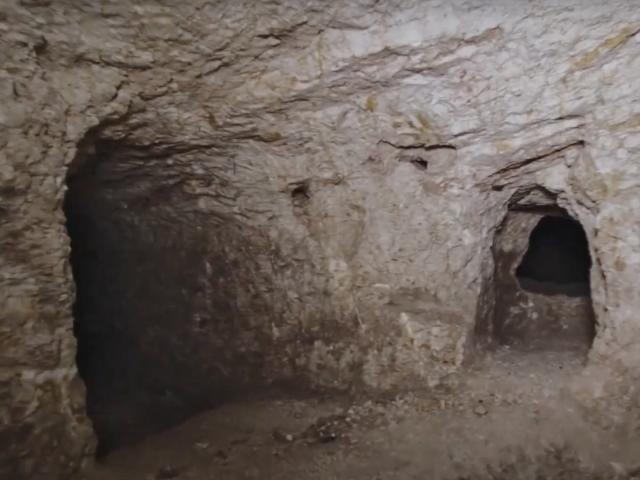Recent archaeological excavations at Huqoq, in the Galilean region, have unearthed compelling evidence suggesting a broader geographic involvement in the Bar Kochba revolt against Roman rule in 132 C.E. than previously documented by historic sources. While historical narratives primarily focus on Judea as the epicenter of this rebellion, the discovery of an intricate subterranean complex in Huqoq adds a significant layer to our understanding, indicating active, possibly armed, participation from communities beyond Judea, specifically in the Galilee.
This complex, revealed by the Israel Antiquities Authority, was initially discovered decades ago but has only recently been thoroughly investigated. Its scale and sophistication surpass expectations, with connected tunnels and eight chambers hidden beneath residential areas, hinting at a well-planned refuge from Roman aggression. This structure, the most elaborate of its kind found in the Galilee to date, underscores the seriousness with which local Jewish communities approached the threat of Roman retaliation.
A Bar Kokhba era (132–135 CE) hiding complex has been found at Huqoq in Galilee.
— Yonatan Adler (@AdlerYonatan) March 18, 2024
The find adds to a growing body of evidence from northern sites relating to the Second Revolt which suggests that the rebellion extended beyond Judea, deep into Galilee.https://t.co/Vmi6kN6NUt
1/10
The Huqoq excavation site, near the Sea of Galilee, was once a vibrant Jewish town known for its scholarly contributions to the Jerusalem and Babylonian Talmuds in the centuries following the Roman wars. The transformation of communal water facilities, including a mikveh (ritual bath) and water cisterns, into a sprawling hideout equipped for prolonged occupation, speaks volumes about the anticipation and fear of Roman conquest. Archaeological finds such as pottery, a distinctive ring, and a knife from the period further corroborate the site's link to the Bar Kochba era.
The strategic modifications made to the complex, including narrow tunnels with sharp angles, suggest a deliberate effort to hamper Roman soldiers, indicating a level of militaristic foresight and preparation. This discovery, coupled with the identification of 16 Galilean hiding complexes associated with the Bar Kochba revolt, challenges the traditional narrative that confines the rebellion to Judea. It suggests a more widespread resistance movement against Roman oppression, involving communities across the region in the struggle for Jewish autonomy.
#Israel is the Jewish homeland! ✡️
— Hananya Naftali (@HananyaNaftali) October 6, 2020
This place is called Huqoq. It was an ancient #Jewish village near the Sea of Galilee.
This area is settled since ancient times and mentioned in the Book of Joshua - long before there was such a thing as “#Palestinian”. pic.twitter.com/YLtOAWfOYZ
Although the evidence does not conclusively prove that the Galilee was a battleground in the conflict, the archaeological findings at Huqoq and elsewhere imply a region-wide state of alert and preparedness among Jewish communities. This broader participation underscores the historical significance of the Bar Kochba revolt as not merely a Judean endeavor but a pan-Jewish resistance against Roman domination.
The recent discovery of a rare coin from the revolt period, bearing the hopeful inscription "Year 1 of the redemption of Israel," in the Judean Desert further enriches the narrative of Jewish resilience and defiance. However, the revolt's eventual suppression by Rome marked the end of direct Jewish military resistance to Roman rule.
"A Roman-era mosaic depicting the biblical prophet Samson has been uncovered by archaeologists at the 1,600-yr-old synagogue at Huqoq, an ancient Jewish village in the Lower Galilee."
— Shiri_Sabra (@sabra_the) July 12, 2023
& our archeologists will keep on finding artifacts all over🇮🇱 that is proof of our History here pic.twitter.com/RjppIcjd8V
The excavation at Huqoq, facilitated by a collaborative effort involving volunteers from various walks of life, including local children, soldiers, and students, not only sheds light on this critical chapter of Jewish history but also engages the community in uncovering and preserving its heritage. The site's opening to visitors represents an opportunity to connect with a past marked by struggle, survival, and the indomitable spirit of resistance against tyranny.


